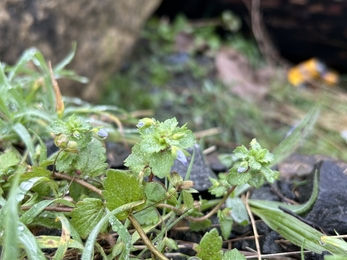I imagine that the first two of my three New Year’s resolutions are probably shared by quite a few of us; read more books and drink more water. We are four days into the new year and I’ve read approximately 30 pages of a novel that’s been on my bedside table for 5 months and begrudgingly drunk 5 litres of water. Whilst I’m off to a good start, and don’t want to give myself excuses to give up, the longevity of the last 15 years or so of my New Year’s resolutions does not give me much hope for this year. The last of the three pledges, however, is something I am a little more optimistic about… because I’ve already achieved it.
My final resolution was to go out with the Durham Wildlife Trust Botany Group, knowing full well that one trip would be sufficient to make me want to go on many more. I discovered a love for botany last year after completing the BSBI’s Identiplant course and have been eager to develop, but crucially maintain, my plant ID skills ever since. It is fitting that my first outing with the botany group was their first of the year; the annual New Year Plant Hunt, the aim of which is to find as many flowering plants as possible in the local area within the first couple of days of January. I first heard of the New Year Plant Hunt whilst reading Leif Bersweden’s ‘Where the Wildlfowers Grow,’ – which, by the way, is a fantastic read for botany lovers – and was completely inspired by waking up early on New Year’s Day to go on a plant hunt as opposed to my usual tradition of sleeping in till 3pm after having too much prosecco the night before. Whilst the Botany Group’s Plant Hunt took place a couple of days later on the 3rd January, it still felt like an excellent start to the year.













